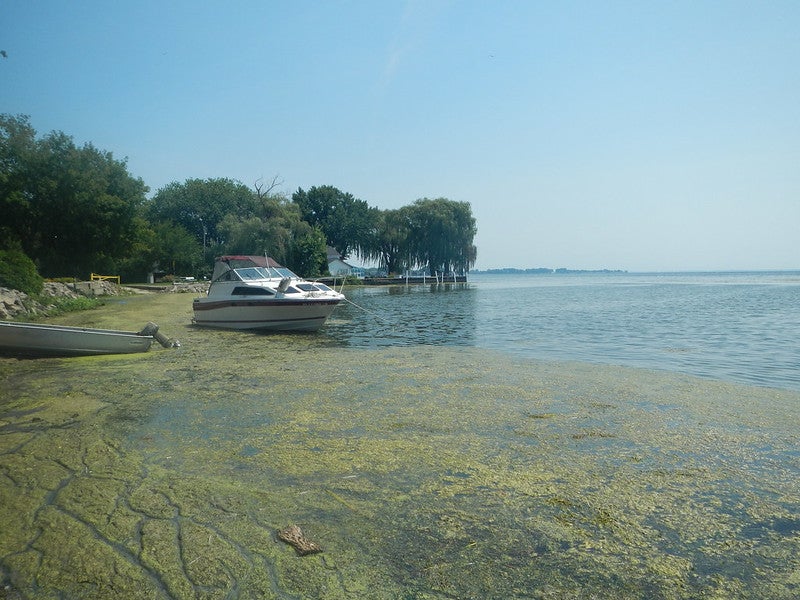
Large shallow lakes, like Lake St. Clair in the Great Lakes region, are often assumed to be well mixed. But this assumption has consequences for predicting downstream nutrient loads, particularly when this assumption is incorrect. Lake St. Clair is a small shallow lake upstream of Lake Erie. Understanding nutrient dynamics in this lake is critical for predicting nutrient loads to Lake Erie where high nutrient loads have led to recurring algal blooms.
In a new paper co-authored by Lake Futures researchers Serghei Bocaniov and Philippe Van Cappellen, along with Donald Scavia, this assumption is challenged to explore how small shallow lakes influence downstream nutrient loading.
They used a three-dimensional ecological model of Lake St. Clair to investigate how total and dissolved reactive phosphorus are transported and retained in different areas of the lake. They also explored how phosphorus inputs from major tributaries of the lake influence the amount of phosphorus that eventually leaves the lake.
They found that Lake St. Clair acted as a phosphorus sink, retaining 17% of total phosphorus and 35% of dissolved reactive phosphorus. It was found that retention varied throughout different parts of the lake. Of the three major tributaries, the Thames River contributed more phosphorus than the Clinton River or the Sydenham River. However, phosphorus in Lake St. Clair was dominated by inputs from the St. Clair River. They showed reducing nutrient inputs from other tributaries will only result in small reductions to the total load that enters Lake Erie. This is important for identifying where nutrient retention efforts should be focused.
This work has also shown that small shallow lakes may not be as spatially well mixed as previously assumed, which probes questions about nutrient dynamics in other small shallow lakes around the world.
Bocaniov, S.A., Van Cappellen, P., Scavia, D. 2019. On the role of a large shallow lake (Lake St. Clair, USA-Canada) in modulating phosphorus loads to Lake Erie. Water Resources Research.